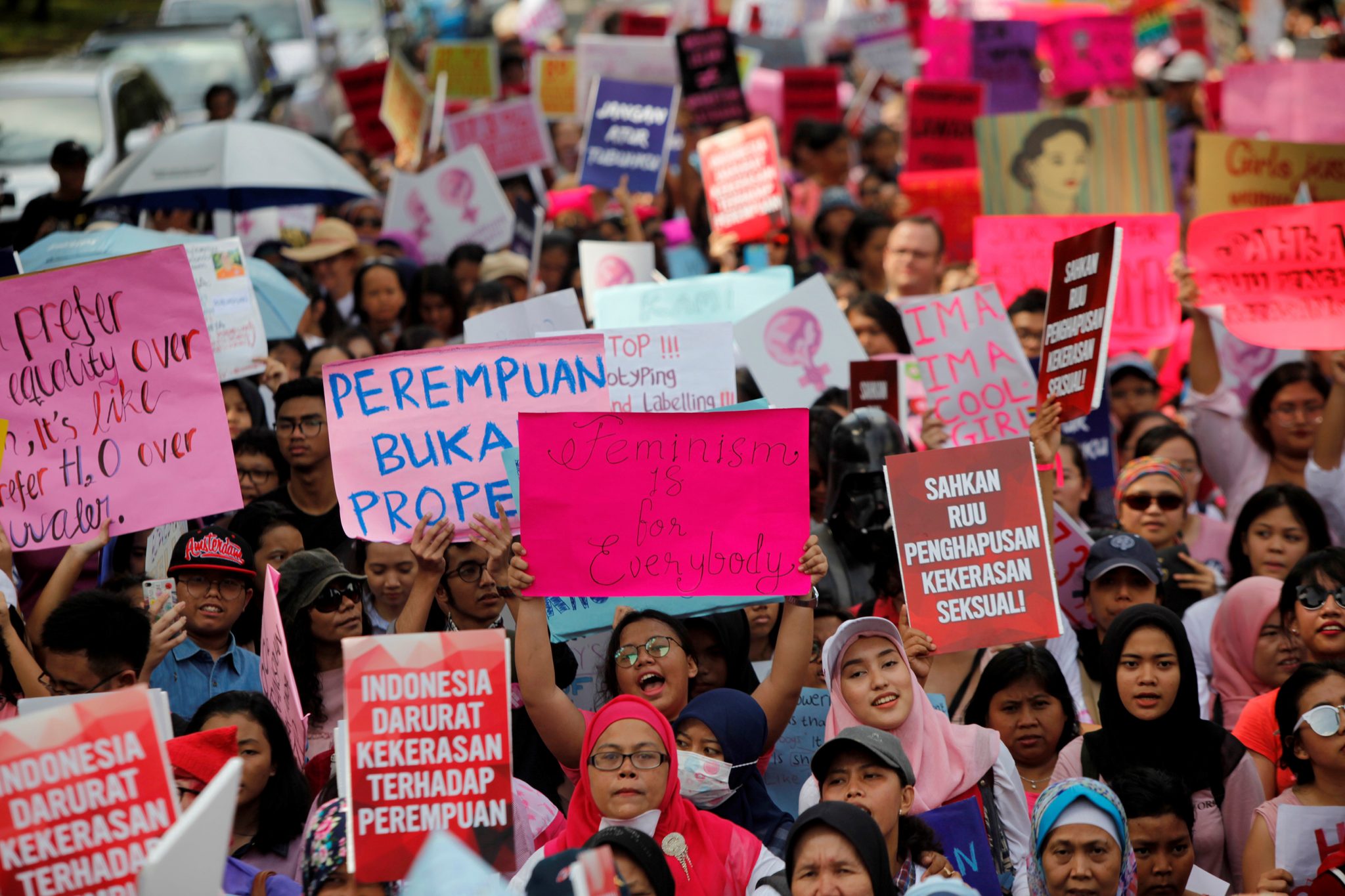The Women’s Rights Movement advocates for gender equality and women’s empowerment worldwide. It has led to significant social and legal changes in numerous countries, impacting women’s rights to vote, work, and be free from discrimination.
The movement has been instrumental in challenging and changing societal norms to ensure equal opportunities and rights for women. The fight for women’s rights spans centuries and has seen waves of activism and progress. From the Seneca Falls Convention in 1848 to the present-day global movements like #MeToo and #TimesUp, women have continuously strived to gain rights, challenge oppressive systems, and achieve gender equality.
This ongoing struggle has created a rich history of achievements and setbacks, shaping the modern landscape of women’s rights around the world.
Early Beginnings Of The Movement
The Women Rights Movement has early beginnings rooted in historical societies and cultures. Throughout history, women have fought for their rights in various societies and cultures, contributing to the foundation of the movement. From the suffragette movements in the 19th and 20th centuries to the fight for reproductive rights and workplace equality, the movement has transformed and evolved, shaping women’s role in society. Key figures such as Susan B. Anthony, Elizabeth Cady Stanton, and Sojourner Truth played pivotal roles in advocating for women‘s rights, paving the way for future generations. The early beginnings of the Women Rights Movement set the stage for the ongoing fight for gender equality and empowerment.
First Wave Of Feminism
The First Wave of Feminism, which emerged in the 19th and early 20th centuries, marked a significant milestone in the women’s rights movement. It focused on advocating for suffrage rights and challenging the prevailing social norms that restricted women’s roles to the domestic sphere. The pioneers of this movement laid the groundwork for future generations of women to actively participate in civic and political affairs. Their relentless efforts and perseverance paved the way for the eventual enactment of laws granting women the right to vote. This pivotal period in history symbolized a crucial step forward in the fight for gender equality and women’s empowerment.
Second Wave: Women’s Liberation
The Second Wave of the Women’s Rights Movement, also known as the Women’s Liberation Movement, brought about significant social and political change during the 1960s and 1970s. This period was marked by a focus on women’s equality, reproductive rights, and gender discrimination. Activists and organizations fought for the implementation of laws to protect women from discrimination in the workplace and society. It also saw the rise of feminists fighting for gender equality and challenging traditional gender roles. The movement sought to address reproductive rights, including the legalization of abortion and access to contraception. Additionally, it aimed to raise awareness about domestic violence and sexual harassment. The Second Wave of the Women’s Rights Movement was a pivotal time in history that paved the way for greater recognition of women’s rights and equality.

Credit: www.eastasiaforum.org
Third Wave: Intersectional Feminism
The Third Wave of the Women’s Rights Movement focuses on Intersectional Feminism, advocating for the equal treatment of women from all backgrounds and identities. It aims to address the intersecting systems of oppression that affect women, highlighting the need for inclusivity and diversity within the feminist movement.
Women’s rights movement has evolved throughout history, and the third wave of feminism has embraced intersectional feminism as a key aspect. This approach emphasizes the inclusivity and diversity within the movement, recognizing the interconnected nature of various social identities. It seeks to address the intersecting systems of oppression and discrimination that affect individuals based on their race, class, gender, sexuality, and more. Intersectional feminism promotes solidarity among women from different backgrounds and highlights the different experiences and challenges they face. By acknowledging and addressing these complexities, the movement strives for a more inclusive and equitable society, where all individuals are empowered and valued.
Women Empowerment In Education
Women empowerment in education is essential for breaking barriers in academia and learning. Access to quality education is a fundamental right, and initiatives aimed at providing equal educational opportunities for women are crucial. By advocating for girls’ education and challenging societal norms, the women’s rights movement has played a pivotal role in fostering educational empowerment. Additionally, the promotion of STEM education for girls has contributed to narrowing the gender gap in science and technology fields. Educational institutions have a responsibility to create an inclusive learning environment that supports and encourages women’s participation. Through targeted policies and awareness campaigns, progress towards gender equality in education can be realized, leading to greater societal advancement and female empowerment.
Empowerment Through Economic Opportunities
The Women Rights Movement is instrumental in empowering women through economic opportunities. Overcoming gender disparities in the workforce is crucial for achieving equality in the professional realm. By addressing wage gaps and advocating for equal employment opportunities, the movement seeks to eradicate preconceived notions about gender roles in the workplace. Moreover, it aims to provide women with the necessary tools and resources to thrive in their careers and contribute to the economy. Through initiatives such as mentorship programs, leadership training, and support for entrepreneurship, the movement strives to create a level playing field for women in various industries. By championing diversity and inclusion, the movement fosters an environment where women can excel and be recognized for their talents and contributions.
Legal Rights And Empowerment
The Women’s Rights Movement has been dedicated to advocating for equality under the law to ensure legal rights and empowerment for women. This has involved the fight for equal pay, reproductive rights, and protection against domestic violence. Organizations have worked tirelessly to challenge discriminatory laws and practices and to ensure that women have the same legal rights as men. Through lobbying, legal challenges, and public awareness campaigns, progress has been made in advancing women’s rights. However, there is still work to be done to fully achieve equality under the law. The movement continues to push for legal reforms that address the unique challenges and barriers faced by women in society.
Media Representation And Empowerment
The Women Rights Movement has been particularly influential in shaping perceptions and breaking stereotypes. By highlighting the empowerment of women and challenging traditional gender roles, the media plays a crucial role in promoting equality. Through various forms of media, such as film, television, and social media, the portrayal of strong, independent women has become more prevalent, inspiring and empowering audiences. By showcasing women from diverse backgrounds and experiences, the media can help to promote a more inclusive and diverse representation of women. This can have a profound impact on societal attitudes and beliefs, ultimately contributing to the advancement of women’s rights and equality.
Empowerment Through Advocacy And Activism
Women’s rights movements have played a pivotal role in empowering women through advocacy and activism. Grassroots initiatives have been fundamental in addressing gender inequalities and promoting equal opportunities for women in various spheres of society. The current focus lies on championing reproductive rights, economic empowerment, and political representation for women. These movements have sparked global conversations and led to the implementation of policies that aim to safeguard the rights and dignity of women. Additionally, they have worked towards nurturing inclusive communities while addressing issues such as gender-based violence and discrimination.
Frequently Asked Questions Of Women Rights Movement
What Is The Women’s Rights Movement About?
The women’s rights movement advocates for gender equality and women’s empowerment in all aspects of life.
Why Is The Women’s Rights Movement Important?
It is crucial for addressing gender discrimination, ensuring equal opportunities, and advocating for women’s freedoms and rights.
How Has The Women’s Rights Movement Evolved?
The movement has progressed from suffrage to tackling inequalities in employment, education, healthcare, and reproductive rights.
What Are The Major Achievements Of The Women’s Rights Movement?
Some key accomplishments include securing the right to vote, reproductive rights, and access to equal opportunities in the workforce and education.
What Are The Current Challenges Facing The Women’s Rights Movement?
Issues such as gender-based violence, pay disparities, and underrepresentation in leadership roles continue to challenge the movement.
How Can Individuals Support The Women’s Rights Movement?
Supporters can get involved through education, advocacy, promoting diversity and inclusivity, and standing up against gender-based discrimination.
Conclusion
In the fight for equality, the women’s rights movement has made significant strides. By advocating for equal pay, reproductive rights, and gender equality, women have influenced positive change. As we continue to uphold these values, let’s support and empower women in their quest for justice and equality.
Together, we can create a more inclusive and equitable world for all.


